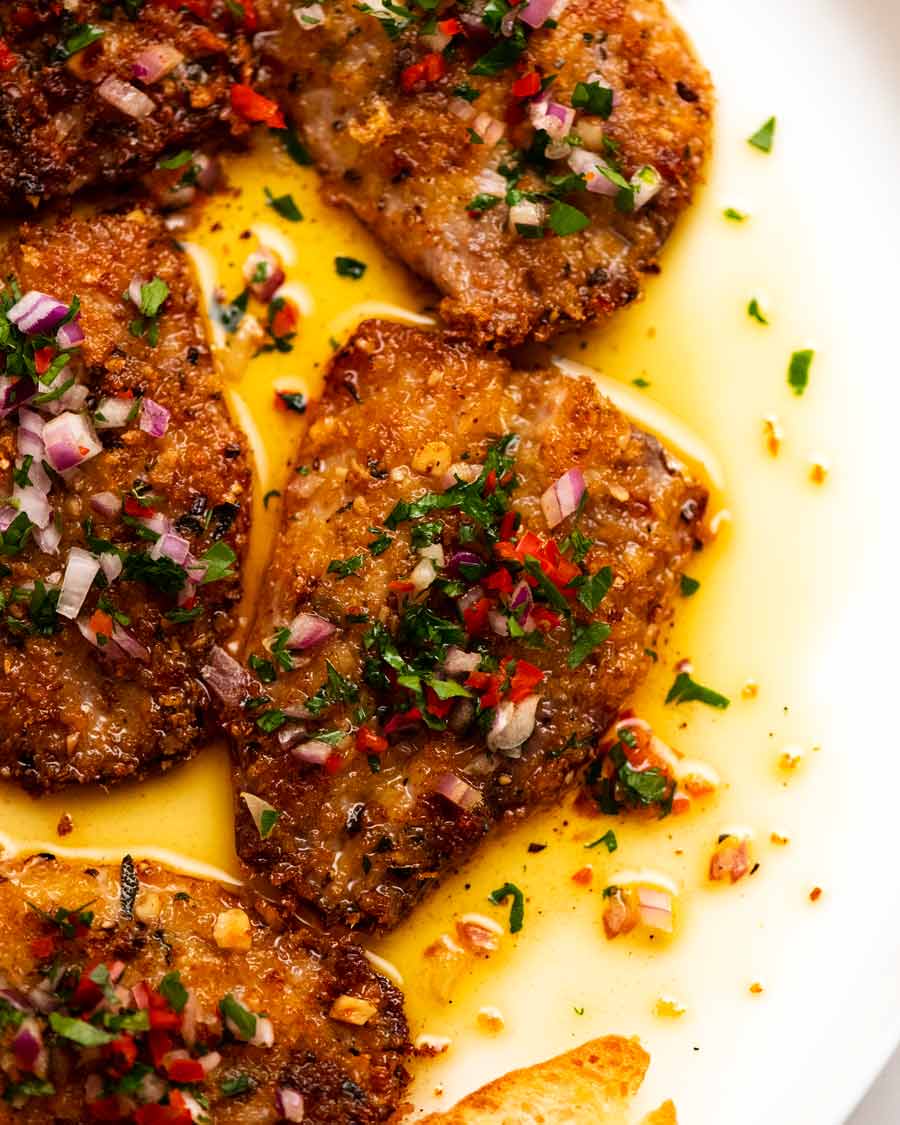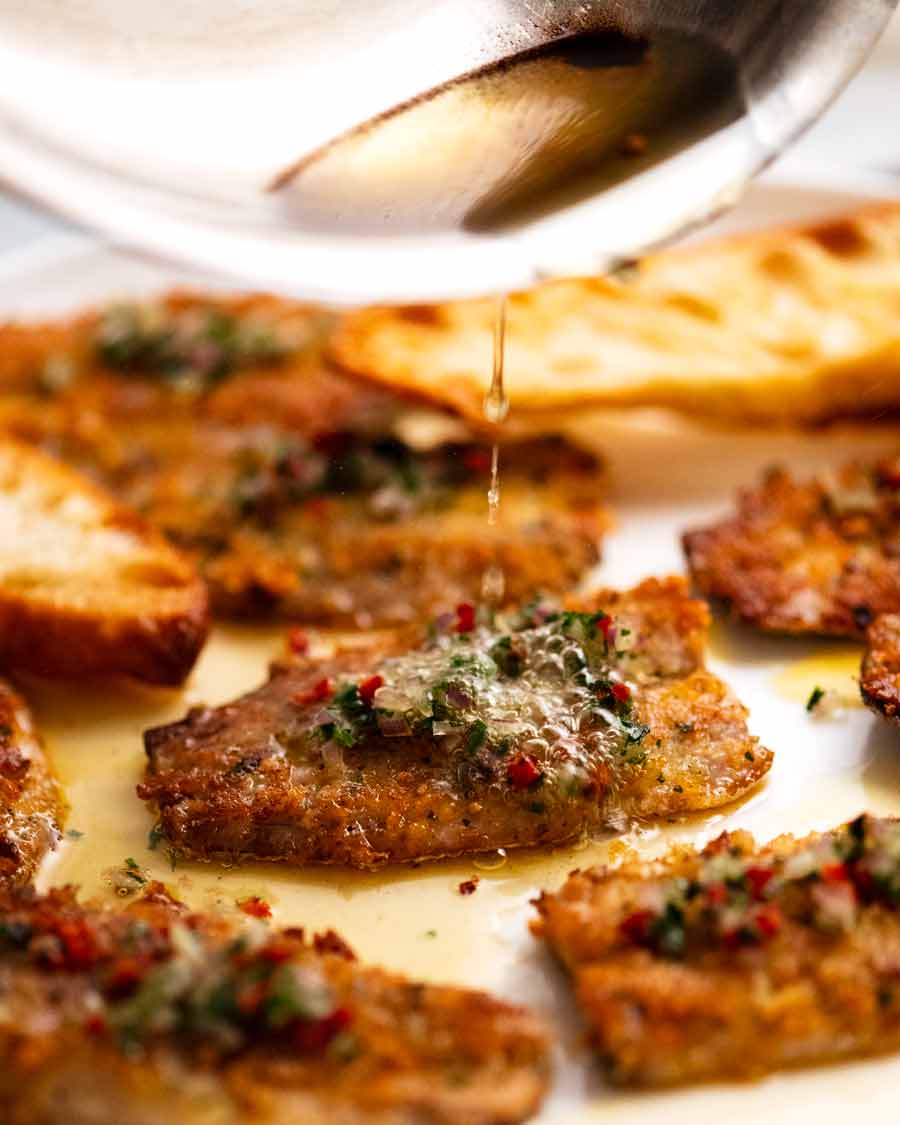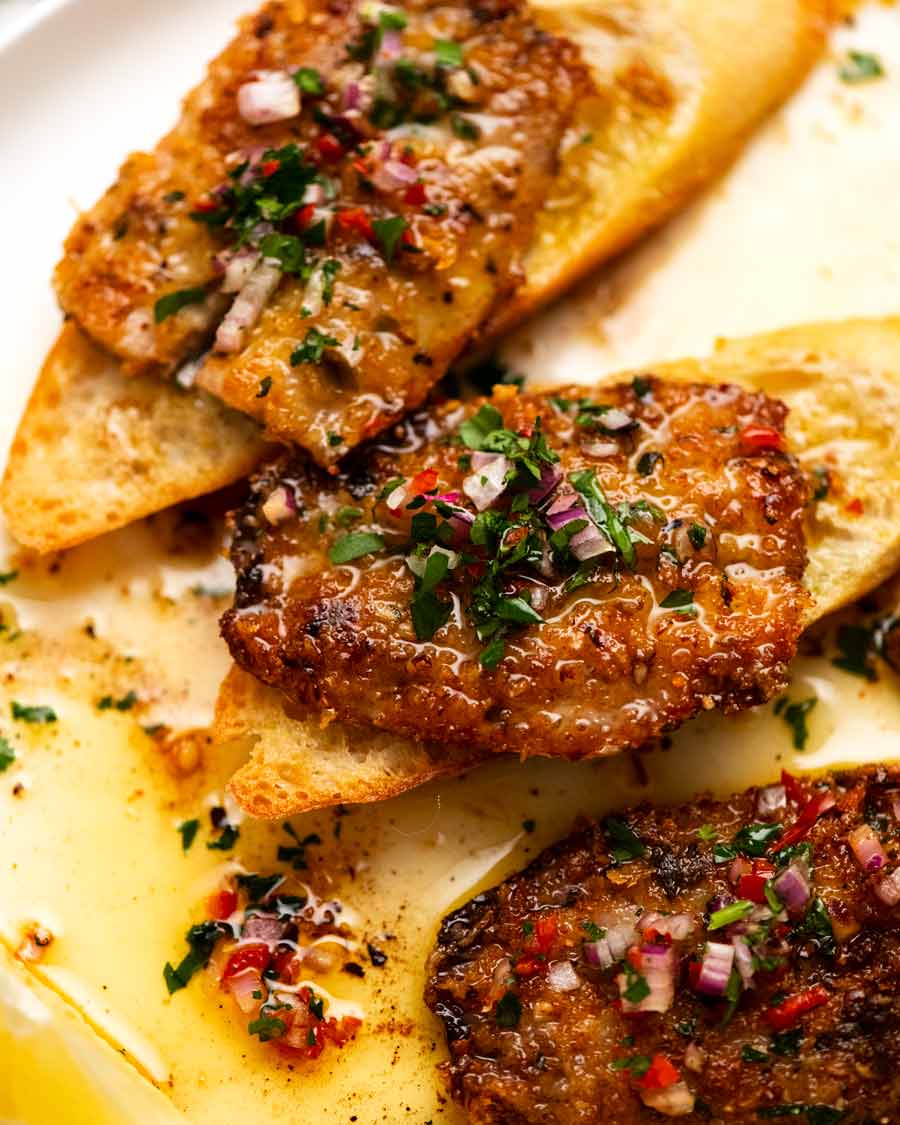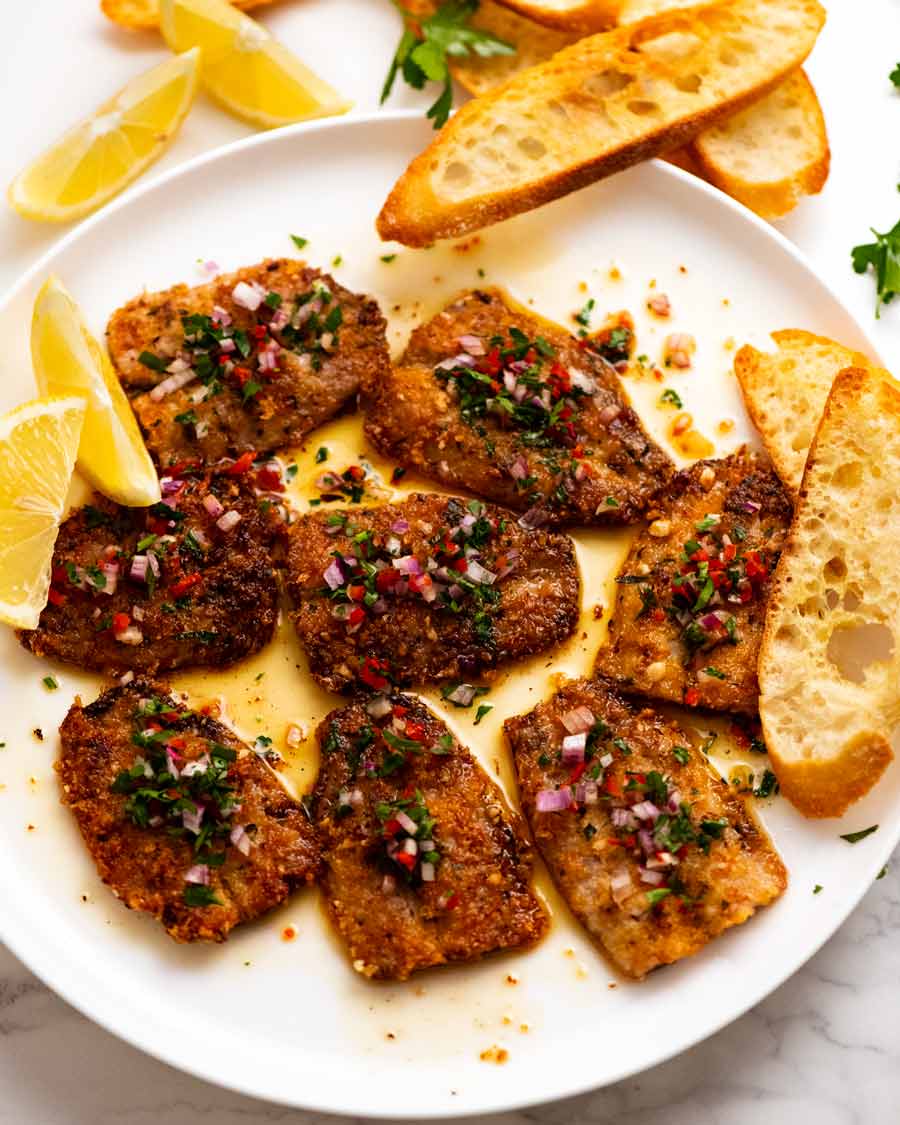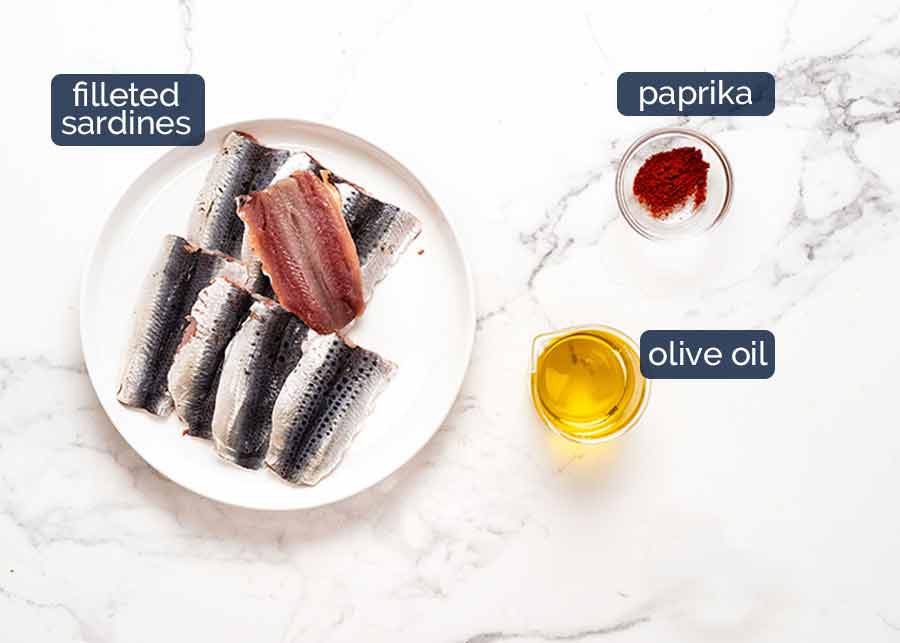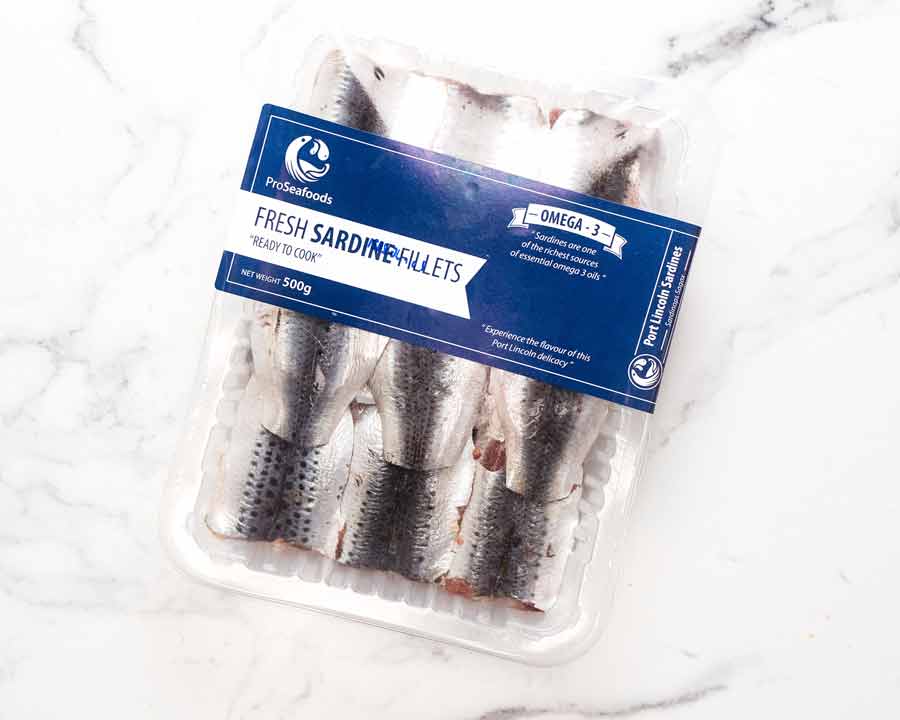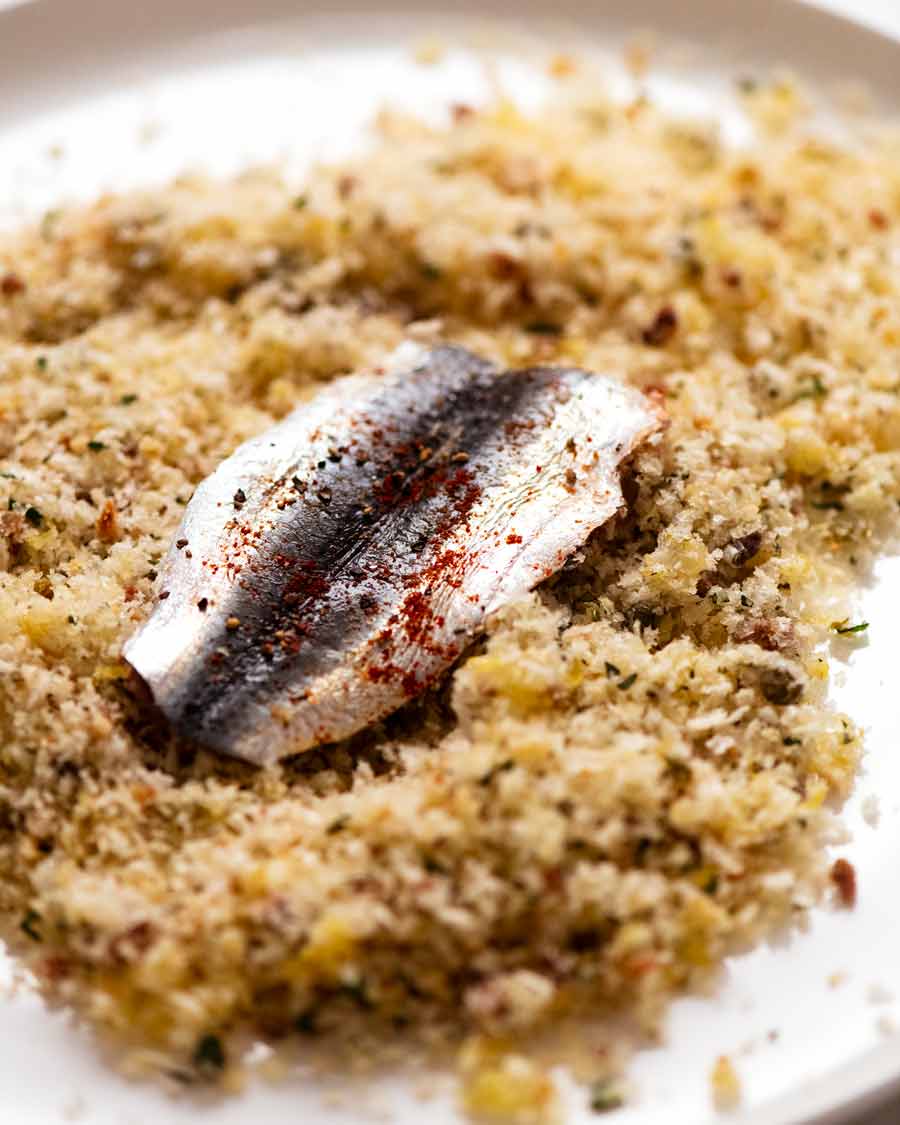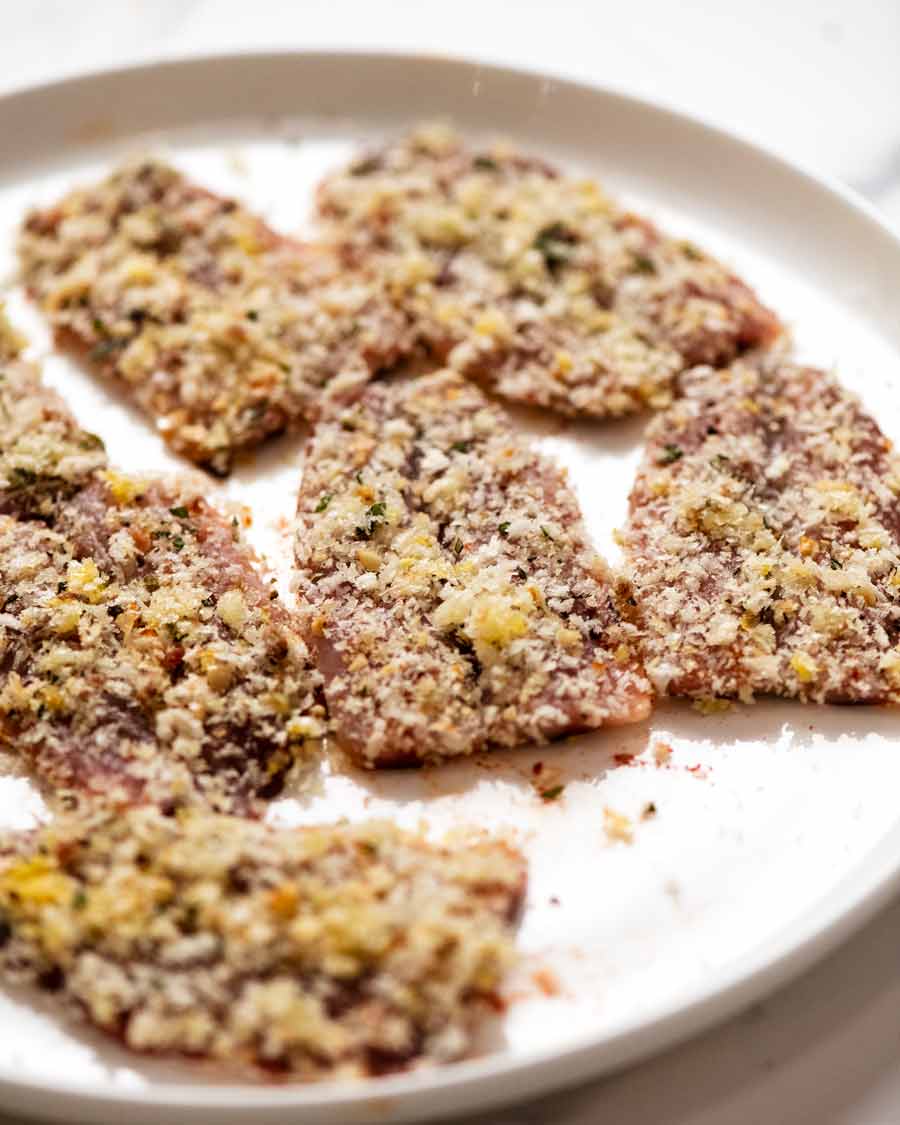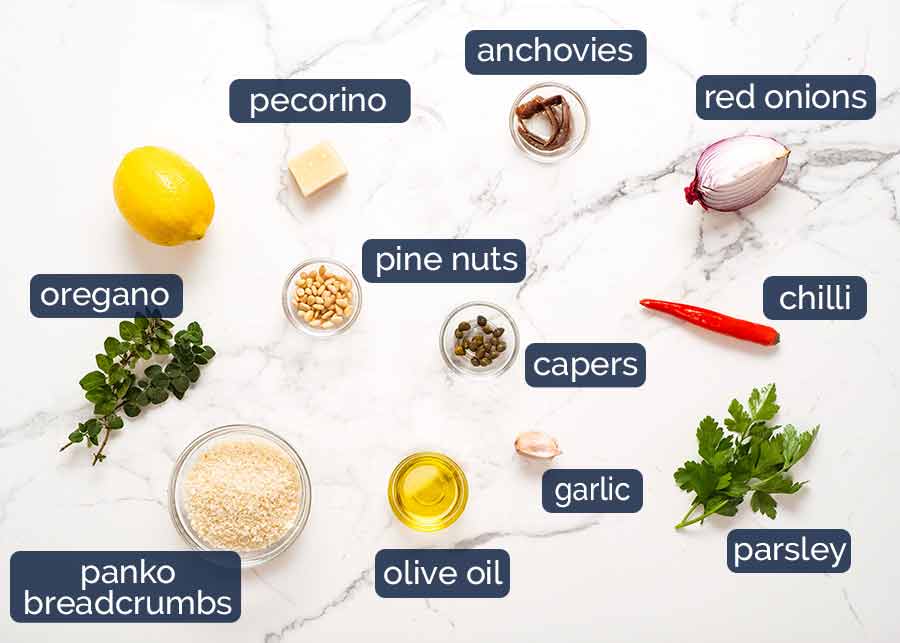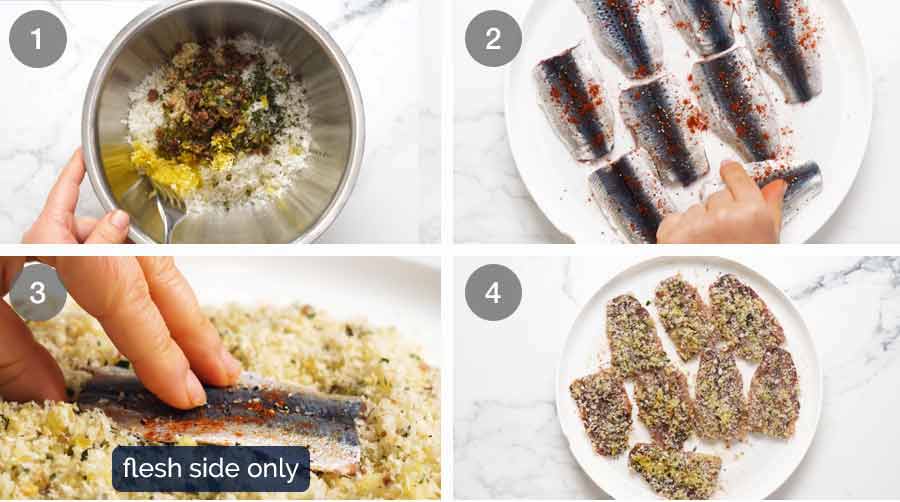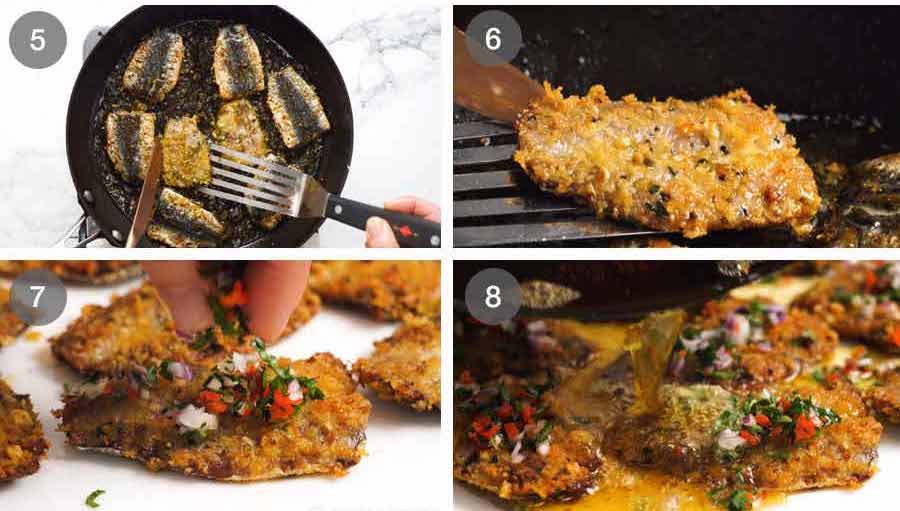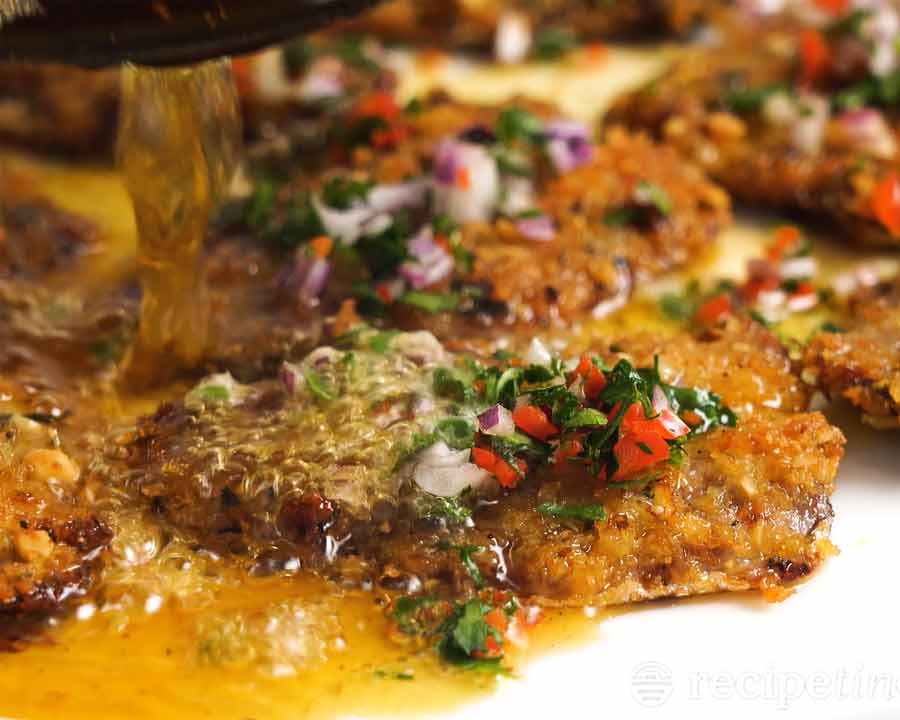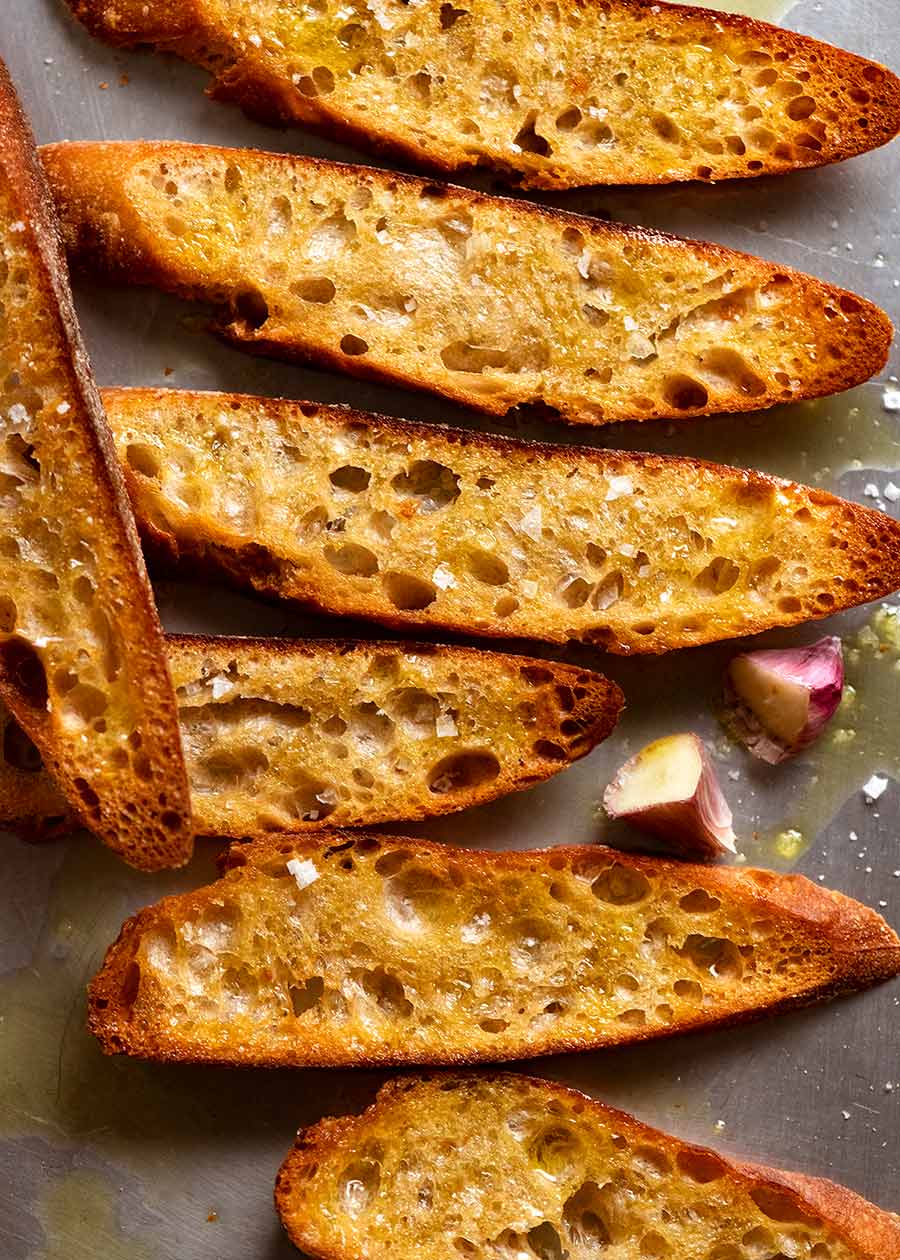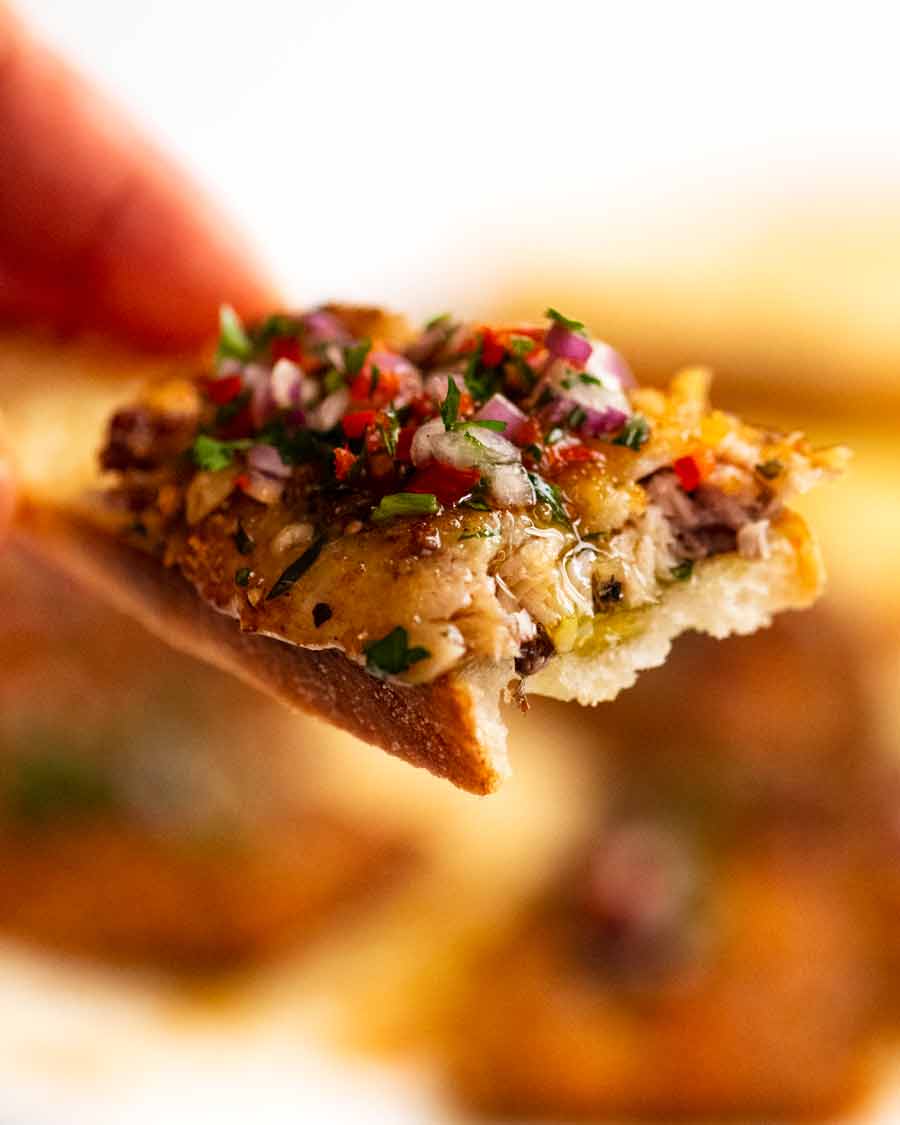Sardine recipe
Sardines are one of the most underrated fish around. They are rich in flavour, cheap and good for you (they’re packed with heart-healthy omega 3’s). They’re also a fast-breeding and sustainably fished species. Many cultures revere the humble sardine, especially when pulled sparkling fresh from the sea. In Sicily, Italians love to roll up sardines stuffed with breadcrumbs, garlic, herbs and a little tangy hard cheese, then bake them or throw them on a hot barbecue. It’s this southern Italian take on sardines that we’re drawing inspiration from today. The flavours of Sicily – lemon, pine nuts, chilli, garlic, herbs, pecorino and olive oil – are a winning match for the robust flavour of sardines! This recipe is an excellent one for the sardine-wary or first-timers because:
There’s no bones to worry about. We’re using pre-filleted sardines today. However for the record, sardine bones are so small and soft you can actually eat them! The intense crust flavours stand up to the stronger flavour of sardines; and It’s really quick and easy.
This is a really quick sardine recipe with big Italian flavours that’s great for sardine first-timers.
Sardines for this recipe
As mentioned above, we’re using fresh, pre filleted sardines in this recipe. The guts and bones are removed, and the sardines come butterflied, as shown below. They can be purchased from fish mongers fresh and sometimes packaged at fresh produce stores such as Harris Farm in Sydney (packet below). Filleting your own is not particularly difficult but it’s a little fiddly to do well. So I will be mighty impressed if you do! Leave a comment below to brag! 😂 If they come vacuum-packed (as pictured below), they can have a shelf life of a couple of weeks. Fresh sardines that aren’t packaged however have a short shelf life, like all oily fish. Use preferably the same day you buy them or at the latest the next day.
Whole fresh sardines
This recipe is specifically designed for filleted sardines but can easily be amended for whole sardines. To do so, just sprinkle the whole sardines with the tasty crumb onto the sardines on a tray, drizzle with olive oil then bake in a hot oven. Directions are in Note 1 on the recipe card.
Canned sardines
Though this recipe is not designed for canned sardines, to incorporate that tasty crumb into a dish using canned sardines, I would split them in half horizontally as best I can (they will break, that’s ok) then line them up so they’re are touching. Cover completely with crumb, drizzle with olive oil, then grill/broil until the crumb is crunchy and the sardines are warmed through. Scoop up with spatula, pile onto toast. Devour! (Directions in Note 1)
Other fish that can be used
This recipe works beautifully with both oily and non-oily fish. The fillets just need to be fairly small and thin with a flat flesh surface. This makes it suitable for the crust to adhere and for the fish to cook through before the crust burns. Other fish that can be used for this recipe as written include:
bream (small) flounder sole herring blue mackerel sea mullet river trout
Use your judgement for quantity – enough for 2 people. Also the cook time will need to be adjusted slightly for the thickness of the fillet you use.
Ingredients for the Italian Crust and Topping
Here’s what you need for the flavour-loaded crust! There’s quite a few substitution options, so don’t be concerned if you don’t have everything.
Anchovies – We’re using this as the seasoning (salt) in the crust mixture. “But, will it be too fishy??” I hear you you wondering. NO! Finely minced, once it’s mixed up withe everything else then cooked, you’re just left with brilliant savoury flavour and no trace of anchovy flavour. Anchovies are a secret ingredient and umami-booster in many classic recipes. Think Italian Puttanesca pasta, French Cafe de Paris (steak butter!), tapenade and everybody’s favourite Caesar Salad Dressing. Chefs know even roast lamb benefits from a few cheeky fillets stuffed or mashed into the flesh.Finely chopping anchovy fillets is best but for convenience, paste can be used. If you’re immovable on the question of anchovies (but … why??!), leave it out and add more pecorino instead. Pecorino (or parmesan) – Another savoury flavour-booster in this crumb, and also helps make the crumb extra crispy when fried up! Panko breadcrumbs – A Japanese breadcrumb favoured for the extra-crispy coating it gives crumbed foods. You can buy it at most big supermarkets (Coles, Woolworths) in the Asian foods section and Asian stores. Substitute with regular breadcrumbs if you can’t find it. Garlic – Hard to find an Italian recipe without! Lemon – We use zest here to bring a beautiful perfume of fresh lemon flavour to the crust. Really, don’t skip this! Capers – Briny goodness to balance out the big savoury flavours going on in this crust. Don’t have capers? Substitute with finely chopped gherkins or even green olives, for a similar flavour effect. Pine nuts – A classic Sicilian ingredient! The creamy nuttiness works brilliantly with sardines. Substitute with: almonds, macadamias or pecans. Parsley, chilli, onion topping – For a fresh touch and sprinkle of colour, and some theatrics as they sizzle dramatically when you douse with the hot oil!Spiciness – The chilli we’re using here are large chillis which are barely spicy. The rule of thumb is: the larger the chilli, the less spicy they are! But if you’re concerned, leave them out and use more parsley instead.
How to make Italian Crusted Sardines
There’s a bit of mincing and grating to get the crunchy crumb coating prepared (but boy is it worth it!). The actual assembling and cooking part is super quick: 2 1/2 minutes on the stove! Anchovies are a secret ingredient and umami-booster in many classic recipes. Think Italian Puttanesca pasta, French Cafe de Paris (steak butter!), tapenade and everybody’s favourite Caesar Salad Dressing. Chefs know even roast lamb benefits from a few cheeky fillets stuffed or mashed into the flesh. Finely chopping anchovy fillets is best but for convenience, paste can be used. If you’re immovable on the question of anchovies (but … why??!), leave it out and add more pecorino instead. Spiciness – The chilli we’re using here are large chillis which are barely spicy. The rule of thumb is: the larger the chilli, the less spicy they are! But if you’re concerned, leave them out and use more parsley instead.
What to serve with Italian Sardines
To make this into an instant meal serve on toast or for even better crunch factor, crostini. I like to use thin baguettes and slice on a heavy bias to make long crostini. See here for directions for how to make crostini. Don’t worry, it will adhere quite firmly once cooked, thanks to the pecorino cheese (cheese = second best food glue after egg!) A tip is to place the sardines in the skillet in a set sequence so you then can turn them in the same order. This is important for even cooking in recipes like this where the food is on the stove for such a short period of time. We pour this delicious, hot oil over the sardines. The topping fries instantly, their aromas and flavours released in a dramatic sizzle! In fact, why not do this at the table, to impress? 😇
Side salad
Go for a brightly-dressed, juicy salad to cut through the richness of the fish and oil dressing. A big, fat, juicy Greek Salad would be absolutely on theme here, as would an Italian Panzanella or a Tomato Salad with Olive Tapenade. Here are a few more suggestions: And if you’re ever feeling indecisive, you know you always have our ultimate fall back – The Great Garden Salad! – Nagi x
Watch how to make it
Catch these fish recipes!
Life of Dozer
Rate him out of 10 for cuteness!
